A Test Method for Acoustic Emission Properties of Natural Cellulose Fiber-Reinforced Composites
Abstract
:1. Introduction
2. Experiments
2.1. Materials
2.2. Acoustic Vibration Test Device
2.2.1. Specimen Fixing
2.2.2. Induction of Vibration
2.2.3. Acoustic Signal Collection and Processing
2.2.4. Acoustic Vibration Characteristics
2.3. Flexural Test
3. Results and Discussion
3.1. Effect of Different Vibration Stimulation Impulses
3.2. Influence of Environmental Relative Humidity
3.3. Effects of Specimen Thickness
3.4. The Relation between Dynamic Elastic Modulus and Flexural Modulus
4. Conclusions
Author Contributions
Funding
Conflicts of Interest
References
- Cherradi, Y.; Rosca, I.C.; Cerbu, C.; Kebir, H.; Guendouz, A.; Benyoucef, M. Acoustic properties for composite materials based on alfa and wood fibers. Appl. Acoust. 2021, 174, 107759. [Google Scholar] [CrossRef]
- Balakrishnan, B.; Raja, S.; Rajagopal, A. Influence of MWCNT fillers on vibroacoustic characteristics of polymer nanocomposite and coated aircraft panels. Appl. Acoust. 2021, 172, 107604. [Google Scholar] [CrossRef]
- Olcay, H.; Kocak, E.D. Rice plant waste reinforced polyurethane composites for use as the acoustic absorption material. Appl. Acoust. 2021, 173, 107733. [Google Scholar] [CrossRef]
- Shen, H.; Yang, Y.; Wang, P.; Hong, Y.; Legrand, X.; Yang, X.; Wu, J. Effect of tufting technique on sound insulation of multi-layer glass woven fabrics. Mater. Res. Express 2020, 7, 095510. [Google Scholar] [CrossRef]
- Shin, P.-S.; Kim, J.-H.; DeVries, K.L.; Park, J.-M. Manufacturing and qualitative properties of glass fiber/epoxy composite boards with added air bubbles for airborne and solid-borne sound insulation. Compos. Sci. Technol. 2020, 194, 108166. [Google Scholar] [CrossRef]
- Hariharan, A.; Prabunathan, P.; Kumaravel, A.; Manoj, M.; Alagar, M. Bio-based polybenzoxazine composites for oil-water separation, sound absorption and corrosion resistance applications. Polym. Test. 2020, 86, 106443. [Google Scholar] [CrossRef]
- Barile, C.; Casavola, C.; Pappalettera, G.; Kannan, V.P. Application of different acoustic emission descriptors in damage assessment of fiber reinforced plastics: A comprehensive review. Eng. Fract. Mech. 2020, 235, 107083. [Google Scholar] [CrossRef]
- Dunne, R.; Desai, D.; Sadiku, R. A Review of the Factors that Influence Sound Absorption and the Available Empirical Models for Fibrous Materials. Acoust. Aust. 2017, 45, 453–469. [Google Scholar] [CrossRef]
- Ide Rosa, M.; Santulli, C.; Sarasini, F. Acoustic emission for monitoring the mechanical behaviour of natural fibre composites: A literature review. Compos. Part A Appl. Sci. Manuf. 2009, 40, 1456–1469. [Google Scholar] [CrossRef]
- Reboul, N.R.; Saidi, M.; Gabor, A. Using acoustic emission to assess the tensile behaviour of textile reinforced, cementitious (TRC) matrix composites. Constr. Build. Mater. 2021, 310, 125216. [Google Scholar] [CrossRef]
- Kalteremidou, K.A.; Murray, B.R.; Carrella-Payan, D. Failure analysis of CF/epoxy hollow beam components using digital image correlation and acoustic emission analyses. Compos. Struct. 2021, 275, 114481. [Google Scholar] [CrossRef]
- Liang, Q.; Liu, J.; Wang, X. Flexural progressive failure mechanism of hybrid 3D woven composites: Combination of X-ray tomography, acoustic emission and digital image correlation. Compos. Struct. 2022, 280, 114894. [Google Scholar] [CrossRef]
- Wegst, U.G.K. Wood for sound. Am. J. Bot. 2006, 93, 1439–1448. [Google Scholar] [CrossRef]
- Damodaran, A.; Lessard, L.; Babu, A.S. An Overview of Fibre-Reinforced Composites for Musical Instrument Soundboards. Acoust. Aust. 2015, 43, 117–122. [Google Scholar] [CrossRef]
- Ibanez-Arnal, M.; Domenech-Ballester, L.; Sanchez-Lopez, F. A Study of the Dynamic Response of Carbon Fiber Reinforced Epoxy (CFRE) Prepregs for Musical Instrument Manufacturing. Appl. Sci. 2019, 9, 4615. [Google Scholar] [CrossRef] [Green Version]
- Jalili, M.M.; Mousavi, S.Y.; Pirayeshfar, A.S. Investigating the Acoustical Properties of Carbon Fiber-, Glass Fiber-, and Hemp Fiber-Reinforced Polyester Composites. Polym. Compos. 2014, 35, 2103–2111. [Google Scholar] [CrossRef] [Green Version]
- Phillips, S.; Lessard, L. Application of natural fiber composites to musical instrument top plates. J. Compos. Mater. 2012, 46, 145–154. [Google Scholar] [CrossRef]
- Wu, Z.H.; Li, J.H. Carbon fiber material in musical instrument making. Mater. Des. 2016, 89, 660–664. [Google Scholar] [CrossRef]
- Howard, W.H.; Williams, M.L. Viscoelastic Properties of Oriented Nylon 66 Fibers Part II: Moisture Dependence of Creep. Text. Res. J. 1966, 36, 691–695. [Google Scholar] [CrossRef]
- Ma, L. Study on Relationships between Wood Structures and Acoustic Vibration Properties; Anhui Agriculture University: Anhui, China, 2005. [Google Scholar]
- Yu, W.; Chu, C. Textile Physics; China Textile & Apparel Press: Shanghai, China, 2001. [Google Scholar]
- Liu, F.; Wang, K.; Lang, C.; Guan, F.; Jiang, J.; Qiu, Y. Mechanical and acoustic emission properties of vegetable fiber-reinforced epoxy composites for percussion instrument drums. Polym. Compos. 2021, 42, 2864–2871. [Google Scholar] [CrossRef]
- Liu, Z. Study on Vibration Property of Spruce Resonance Board and Acoustical Quality Evaluation of Piano; Northeast Forestry University: Harbin, China, 2007. [Google Scholar]
- Lei, F.; Huang, T.; Chen, G. The main factors affecting acoustic quality of soundboard and the methods to evaluate the acoustic quality of soundboard. Shaanxi For. Sci. Technol. 2017, 5, 85–89, 94. [Google Scholar]
- Yu, W. Textile Materials; China Textile & Apparel Press: Beijing, China, 2018. [Google Scholar]
- Nissan, A.H. H-Bond Dissociation in Hydrogen Bond Dominated Solids. Macromolecules 1976, 9, 840–850. [Google Scholar] [CrossRef]
- Yu, X.; Bao, Y.; Wu, Z.; Liu, R. Textile Material Experimental Technology; China Textile & Apparel Press: Beijing, China, 2004. [Google Scholar]
- Zhang, H.; Shen, S.; Cui, Y. Measuring elastic modulus of wood using vibration method. J. Beijing For. Univ. 2005, 27, 91–94. [Google Scholar]
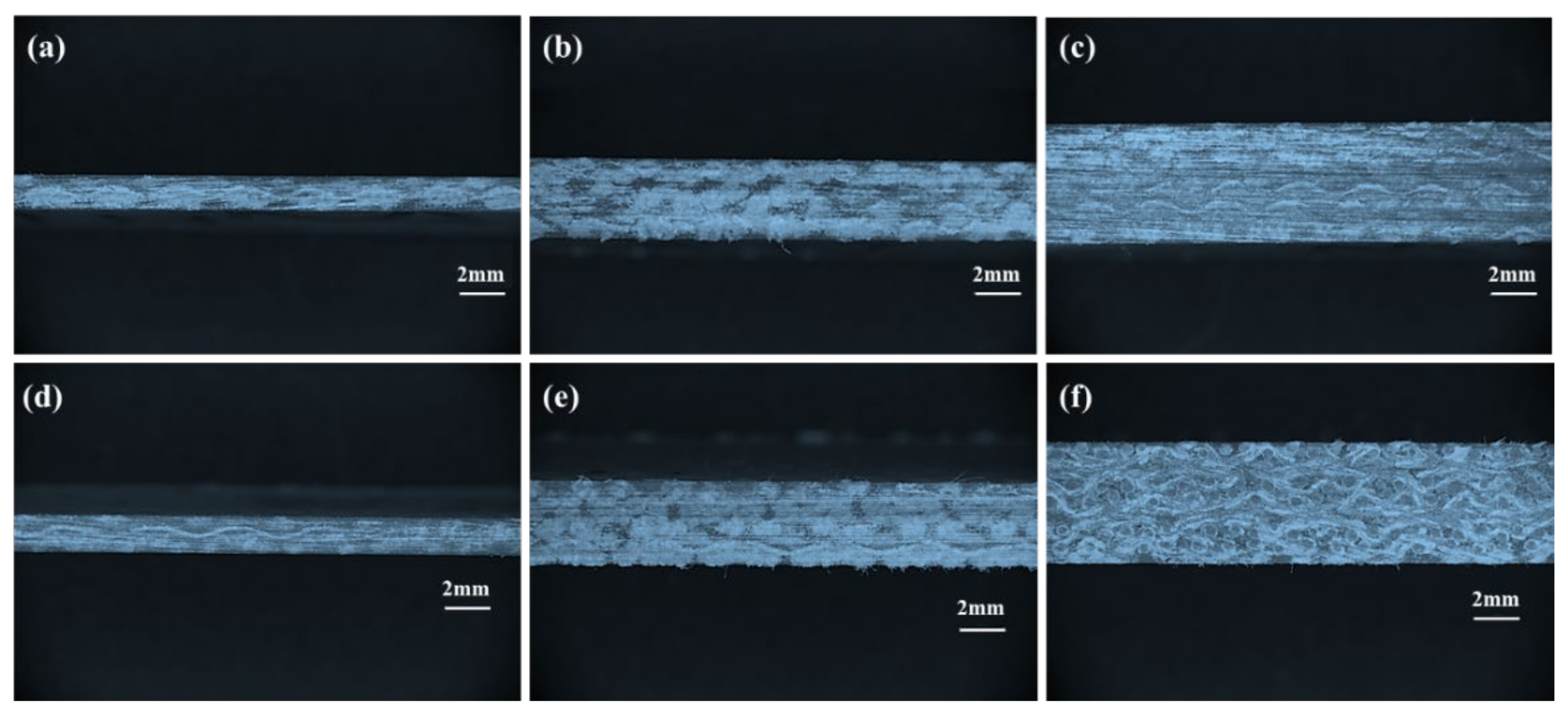

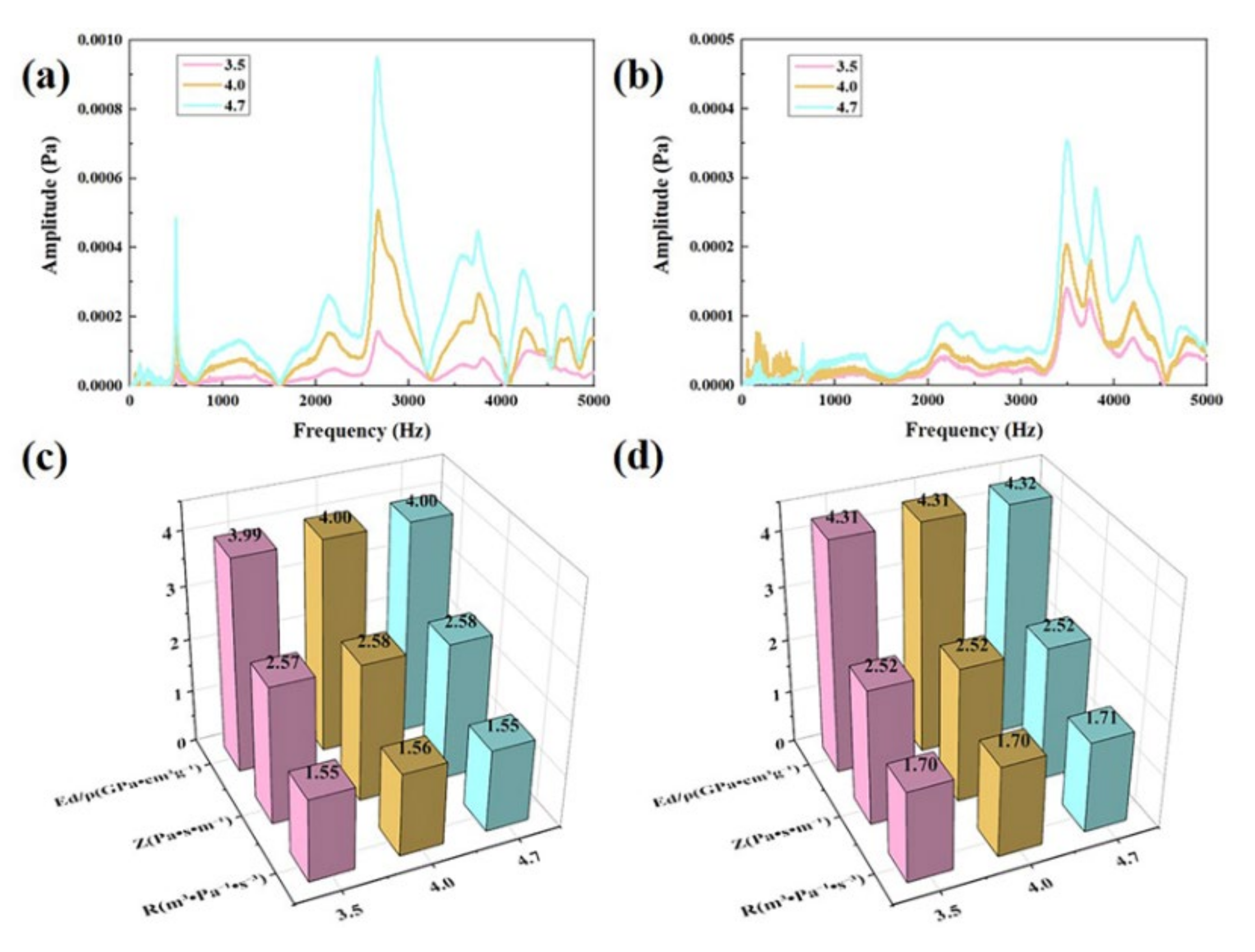
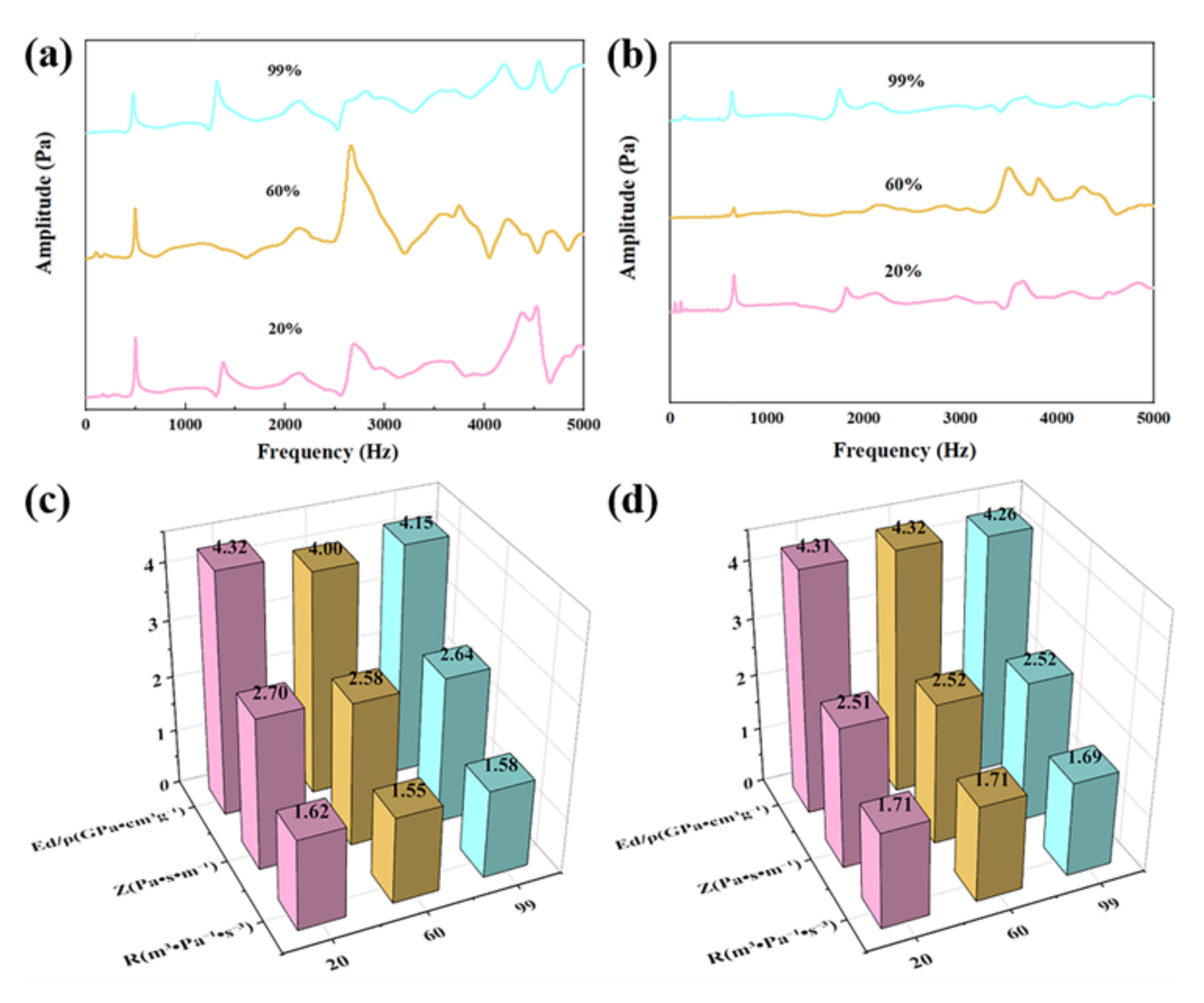
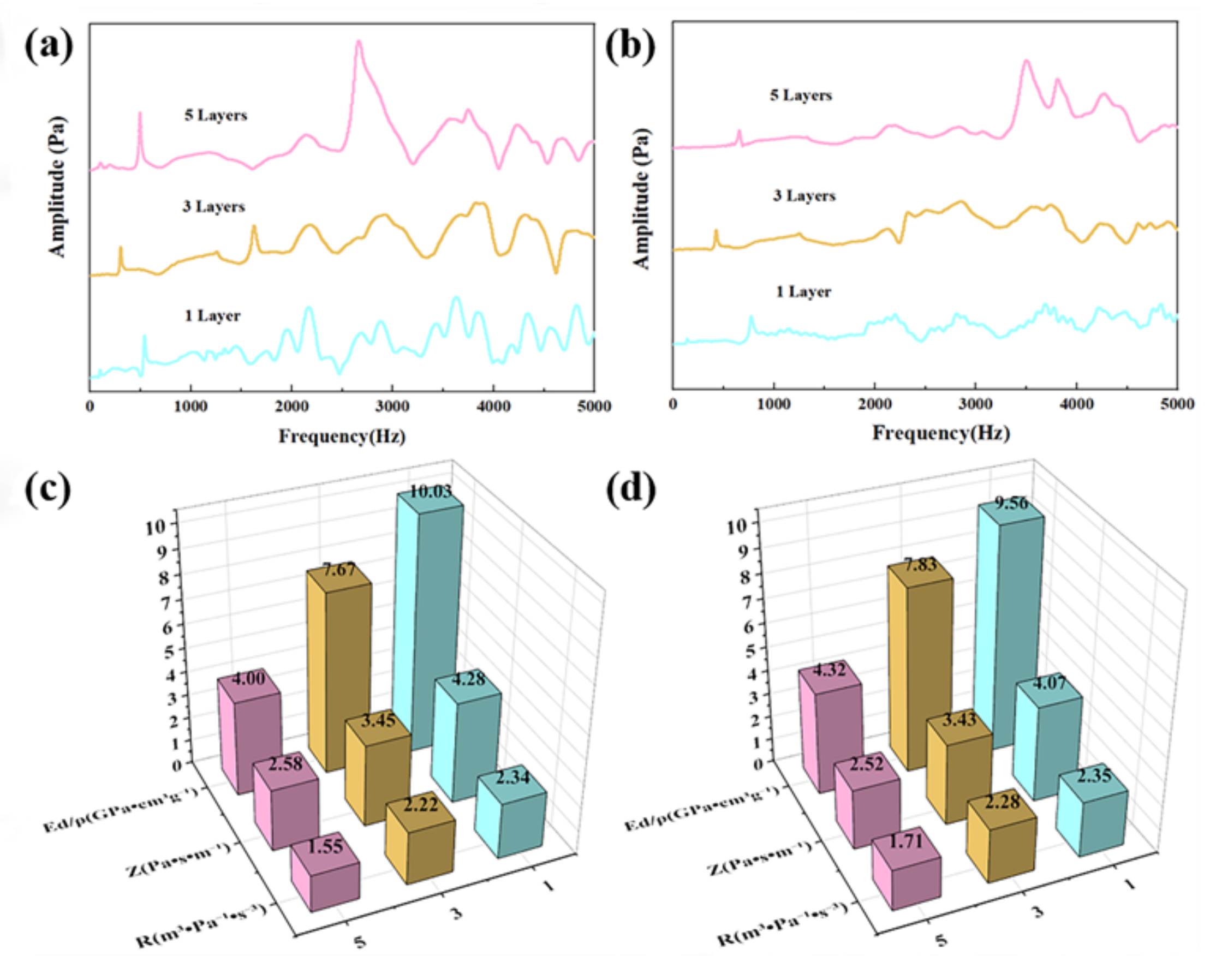
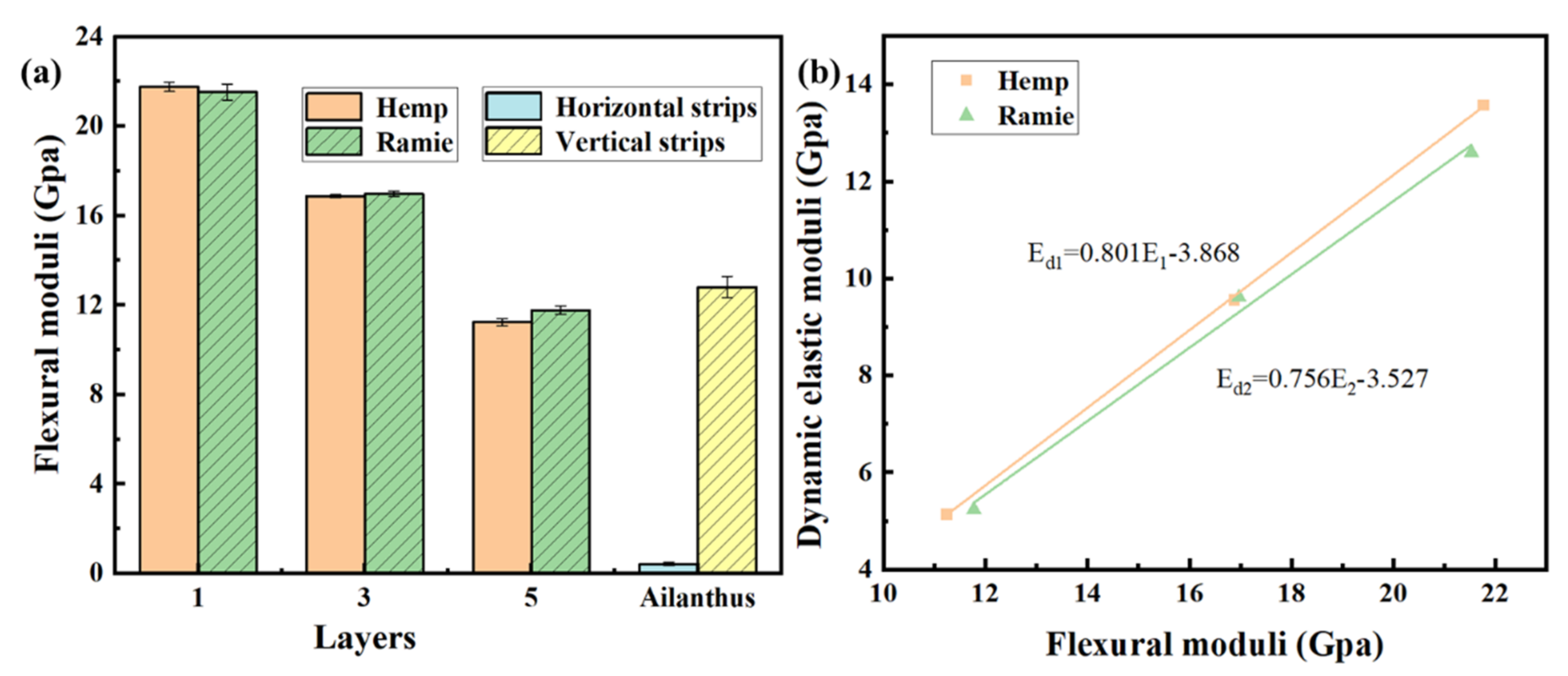
| Fabrics | Fabric Count (end × pick/10 cm) | Weight (g/m2) | Thickness (mm) |
|---|---|---|---|
| Hemp | 108 × 88 | 538 | 0.96 |
| Ramie | 100 × 126 | 619 | 1.136 |
Publisher’s Note: MDPI stays neutral with regard to jurisdictional claims in published maps and institutional affiliations. |
© 2021 by the authors. Licensee MDPI, Basel, Switzerland. This article is an open access article distributed under the terms and conditions of the Creative Commons Attribution (CC BY) license (https://creativecommons.org/licenses/by/4.0/).
Share and Cite
Liu, F.; Gao, Q.; Guo, H.; Lang, C.; Jiang, J.; Qiu, Y. A Test Method for Acoustic Emission Properties of Natural Cellulose Fiber-Reinforced Composites. Appl. Sci. 2021, 11, 12067. https://doi.org/10.3390/app112412067
Liu F, Gao Q, Guo H, Lang C, Jiang J, Qiu Y. A Test Method for Acoustic Emission Properties of Natural Cellulose Fiber-Reinforced Composites. Applied Sciences. 2021; 11(24):12067. https://doi.org/10.3390/app112412067
Chicago/Turabian StyleLiu, Fanxizi, Qiang Gao, Hui Guo, Chenhong Lang, Jinhua Jiang, and Yiping Qiu. 2021. "A Test Method for Acoustic Emission Properties of Natural Cellulose Fiber-Reinforced Composites" Applied Sciences 11, no. 24: 12067. https://doi.org/10.3390/app112412067
APA StyleLiu, F., Gao, Q., Guo, H., Lang, C., Jiang, J., & Qiu, Y. (2021). A Test Method for Acoustic Emission Properties of Natural Cellulose Fiber-Reinforced Composites. Applied Sciences, 11(24), 12067. https://doi.org/10.3390/app112412067







